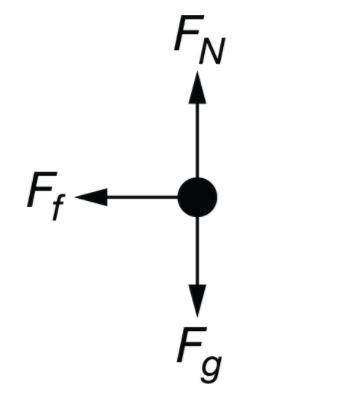
A block slides to the right on a rough horizontal surface. The forces exerted on the block are shown above. Which of the following statements about the frictional force Ff exerted on the block is true?
A) It is the only force acting on the block that is caused by microscopic interactions.
B) It does not depend on the materials that the block and the surface are made of.
C) It is caused by gravitational interactions between the atoms in the block and the atoms in the surface.
D) It is the sum of all the microscopic contact forces between the bottom of the block and the surface.


Answers: 1
Another question on Physics

Physics, 21.06.2019 17:20
Write maxwell's equations and discuss the terms involved and the results of each equation in classical electrodynamics. if it is possible to write these equations in integral form, give the integral forms. find the wave equation for electromagnetic waves from the maxwell equations. what is the propagation velocity of electromagnetic waves in space according to the wave equation you find?
Answers: 3

Physics, 22.06.2019 07:30
30 points - when can a theory be modified if a new type of technology allows for new observations that raise new questions? a. immediately, while the questions about the theory are being asked b. after new hypotheses related to the theory are tested in experiments c. only after the new observations disprove all parts of the theory d. while scientists begin to think about how the theory could improve
Answers: 1

Physics, 22.06.2019 09:00
Infrared rays have a shorter wavelength than question 11 options: x-rays. ultraviolet rays. radio waves. gamma rays.
Answers: 1

Physics, 22.06.2019 10:30
Air is to be preheated by hot exhaust gases in a cross-flow heat exchanger before it enters the furnace. air enters the heat exchanger at 95 kpa and 20°c at a rate of 0.6 m^3/s. the combustion gases (cp = 1.10 kj/kg°c) enter at 160°c at a rate of 0.95 kg/s and leave at 95°c. determine the rate of heat transfer to the air and its outlet temperature.
Answers: 2
You know the right answer?
A block slides to the right on a rough horizontal surface. The forces exerted on the block are shown...
Questions


Mathematics, 24.04.2020 18:45



Mathematics, 24.04.2020 18:45


Social Studies, 24.04.2020 18:45


Mathematics, 24.04.2020 18:45

Mathematics, 24.04.2020 18:45


History, 24.04.2020 18:45

Mathematics, 24.04.2020 18:45

Mathematics, 24.04.2020 18:45

Mathematics, 24.04.2020 18:45

Mathematics, 24.04.2020 18:45



History, 24.04.2020 18:45



